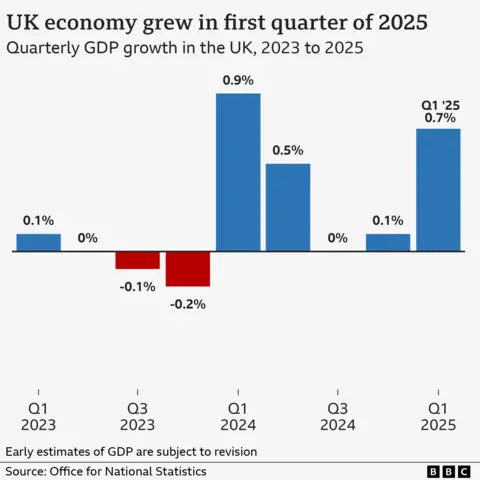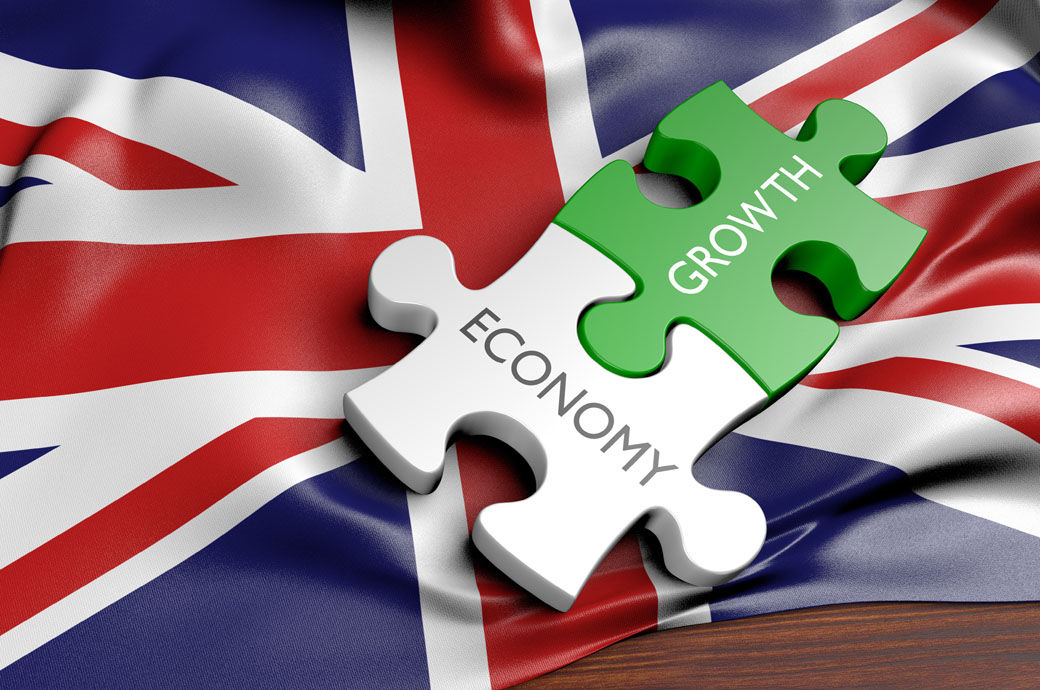Britain’s economy has shown surprising strength at the start of 2025, challenging earlier predictions of stagnation or decline. According to the latest figures, UK GDP grew by 0.7% in the first quarter—beating expectations and temporarily placing the UK as the fastest-growing economy among the G7 nations.
A Welcome Rebound—but Not a Boom

As Faisal Islam, the BBC’s Economics Editor, points out, this isn’t a full-fledged economic boom. But the numbers deserve attention, especially in light of widespread pessimism earlier this year. The figures suggest that talk of recession may have been premature, and the resilience in certain sectors could mark a more lasting recovery.
Chancellor Rachel Reeves, speaking at the Rolls-Royce factory in Derby, acknowledged the strength in the data but urged caution: “There should be no champagne corks,” she said, highlighting that challenges remain—especially for small businesses and working families.
What’s Driving the Growth?
- Interest rate stability: Falling rates have helped stimulate demand and confidence.
- Real income growth: Many workers, especially in lower-income brackets, are seeing better purchasing power, thanks in part to the National Living Wage.
- Political stability: A return to more predictable economic policy has improved business sentiment.
- Global positioning: The UK’s relative tariff stability has become attractive in a turbulent global trade environment.

Resilience Across Sectors—But Uneven Gains
While the broader economy appears more robust, not all sectors are feeling the lift equally. Retail and hospitality continue to struggle under pressure from wage mandates and employer National Insurance increases. For small business owners, margins remain thin, and rising operational costs are biting into profitability.
Nonetheless, the flipside of the minimum wage hikes has been stronger consumer spending among lower-income demographics, helping to stabilize demand across key sectors.
Can Growth Be Sustained?
While many analysts expect a slowdown in Q2 due to April’s tax changes and ongoing global headwinds—like US tariffs—the tone around the UK economy has shifted. What was once seen as fragile may now be viewed as durable, especially if current trends hold.
“This number provides an opportunity for the Chancellor after a growth stutter… a robustly growing economy, stable policy, and tariff stability are decent selling points,” wrote Faisal Islam.
Political & Policy Challenges Ahead
Despite the good news, tensions remain within the government, especially regarding welfare reforms and immigration policy. Businesses delivering 1.5 million new homes or staffing essential sectors like social care may soon be at odds with policies that restrict labour supply.
Reeves affirmed her position: “We will take forward those reforms,” signaling little room for policy reversals despite potential backbench resistance.
Conclusion: Real Resilience or Temporary Lift?
Is the UK economy’s Q1 performance the beginning of a lasting upswing—or just a temporary bounce? The data offers hope and an opportunity for the government to market Britain’s economic resilience globally. But much depends on whether upcoming quarters maintain the momentum.
📈 Read more: Why UK Families Still Feel the Cost of Living Squeeze
🧭 With cautious optimism, the UK steps into Q2—but whether this strength continues may define the economic narrative of 2025.
- 📊 GDP Q1 2025: +0.7%
- 🏆 Fastest G7 growth (pending confirmation)
- 📉 Interest rates stabilizing
- 📌 Key sectors: Construction, Manufacturing, Public Infrastructure









